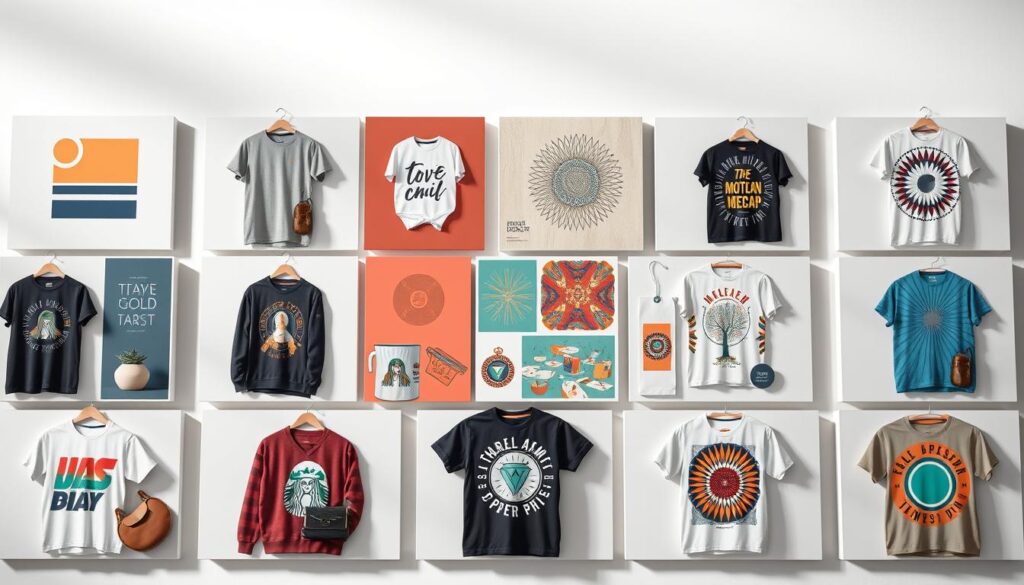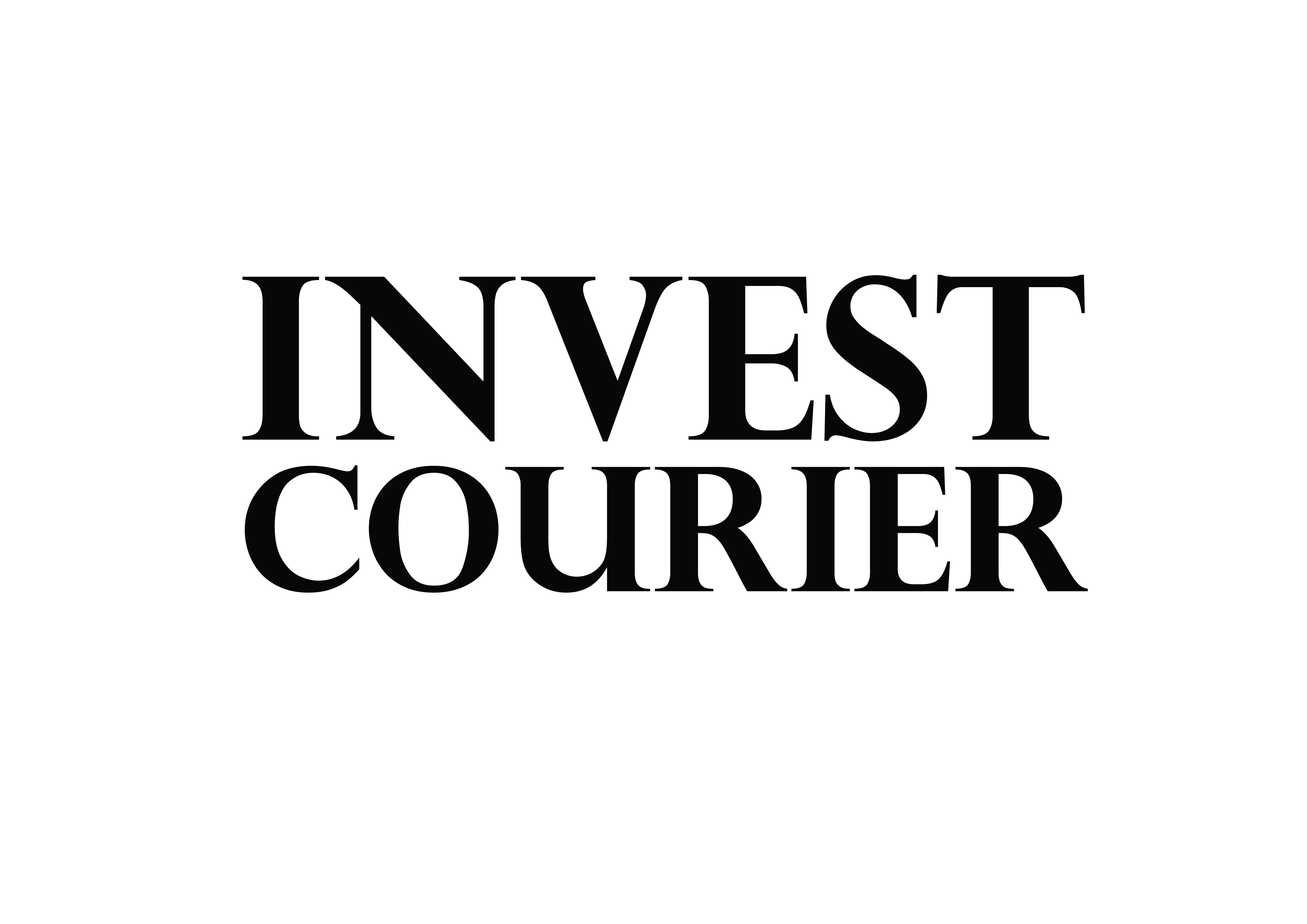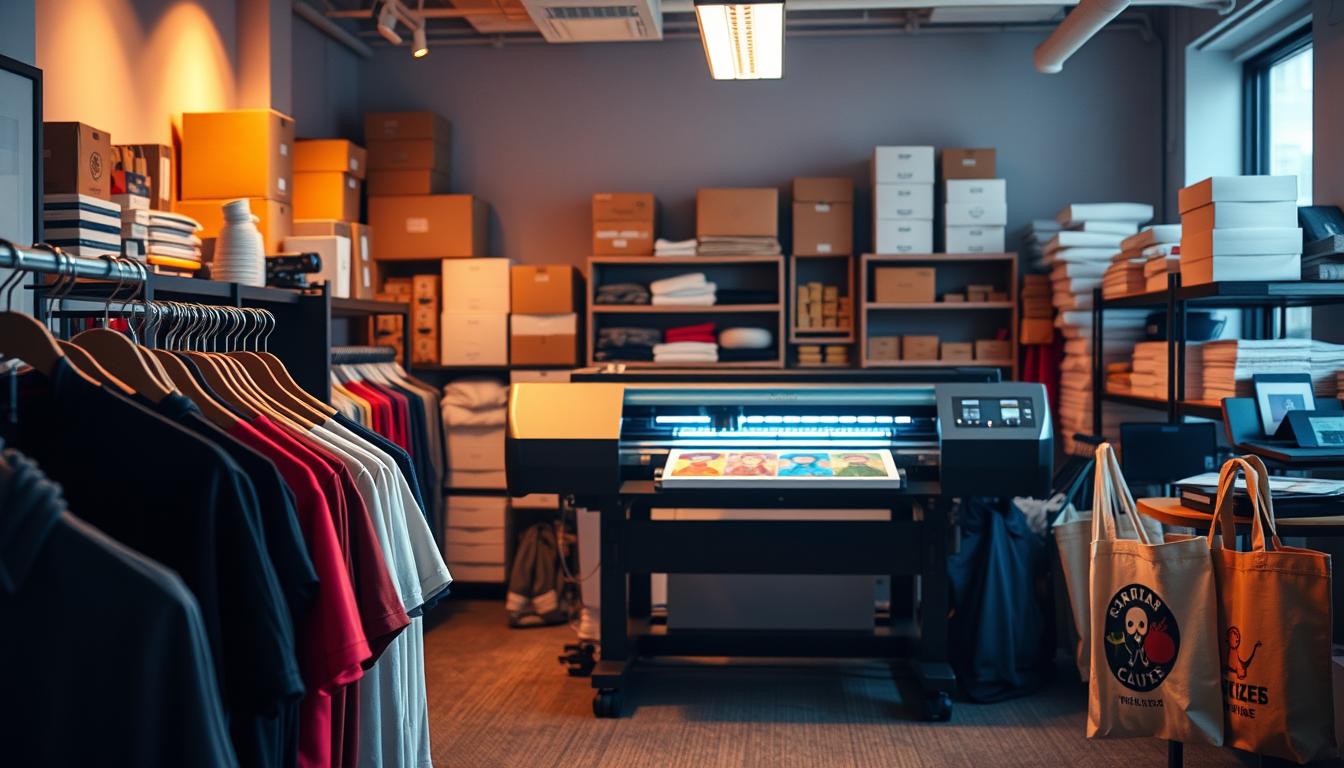The print-on-demand market is booming, with a projected 26.1% annual growth rate through 2030. By then, it’s expected to reach $39.4 billion, making it a lucrative opportunity for entrepreneurs. This model lets you create custom designs without upfront costs or inventory risks.
You’ll discover a 12-step roadmap to build a thriving business. Platforms like Shopify integrate seamlessly with top providers such as Printful and Printify. Whether you sell t-shirts, mugs, or home décor, global scalability is within reach.
Low startup costs and automated fulfillment make this accessible. Later, we’ll dive into psychological pricing strategies to maximize profits. Ready to turn creativity into cash? Let’s get started.
Key Takeaways
- The POD market is growing fast, expected to hit $39.4B by 2030.
- No inventory costs—products are made only after orders come in.
- Shopify and similar platforms simplify automation.
- Popular items include apparel, drinkware, and home goods.
- Minimal startup expenses make it beginner-friendly.
What Is Print-on-Demand and Why It Works
Custom merchandise flies off virtual shelves with zero upfront costs. This business model lets you upload designs, while partners handle production and shipping. Only when a customer buys does the supplier create and ship the item.
The Inventory-Free Business Model Explained
Traditional retail requires bulk purchases and storage space. With print demand, you avoid unsold stock. Apparel dominates 39.6% of the market, but home décor is growing fast at 27.7% annually.
Top-selling products include:
- T-shirts (Gildan or American Apparel blanks)
- Mugs with full-wrap designs
- Wall art in multiple sizes
Key Advantages Over Traditional Ecommerce
Profit margins often hit 40–60%, compared to 15–20% in retail. Automation tools like Shopify apps sync orders instantly with providers such as Printful.
| Factor | Print Demand Business | Traditional Ecommerce |
|---|---|---|
| Startup Costs | $0 inventory | $500+ for bulk orders |
| Risk | No unsold stock | High overstock risk |
| Global Reach | Local production via Gelato | Complex logistics |
Sustainability shines with local print hubs reducing carbon footprints. For global sales, platforms like Payoneer simplify cross-border payments. Ready to join other profitable online businesses? The tools are waiting.
How Print-on-Demand Services Actually Work
Ever wondered how custom products magically appear after a customer clicks ‘buy’? The process combines creative freedom with automated efficiency. When you partner with POD providers, they handle the heavy lifting after the sale.
Step 1: Creating Your Digital Designs
Your journey starts with a 300 DPI design file—the industry standard for crisp prints. Tools like Canva and PlaceIt offer templates sized perfectly for different products. Remember:
- Text-based designs often outperform complex artwork
- Mockups build buyer confidence (PlaceIt creates photorealistic previews)
- Cotton shirts need simpler designs than polyester blends
Step 2: Selecting Base Products
Quality matters when choosing blank items for your designs. Printful’s sample program gives 20% discounts so you can test fabrics firsthand. Consider:
- Gildan shirts for budget-conscious buyers
- Ceramic mugs with full-color wraps
- Gallery-quality canvas prints
Pro tip: Order samples to photograph for your store—authentic images boost products sell rates by 30%.
Step 3: Automating Order Fulfillment
When a customer places order, the real magic begins. Here’s the flow:
- Your store notifies the POD provider
- They print, pack, and ship within 2-5 days
- Tracking updates sync automatically to your dashboard
| Provider | Production Speed | Global Reach |
|---|---|---|
| Printify | 3-7 days | US/EU hubs |
| Gelato | 2-5 days | 90% local production |
Budget providers may take 3 weeks—always disclose shipping times. With the right setup, your demand services run smoothly while you focus on marketing.
Choosing the Right Print-on-Demand Provider
Your provider choice directly impacts profit margins and customer satisfaction. The market offers everything from budget options to premium demand services, each with unique strengths. Let’s decode which platform fits your business goals.
Printful vs Printify vs Gooten
Printful leads in quality with hand-inspected products and branded unboxing experiences. Their sample program helps you verify print durability firsthand. However, premium comes at a cost—their base prices run 15-20% higher than competitors.
Printify counters with a vast network of supplier partners, letting you shop for the best price. Their mockup generator simplifies design testing across 300+ items. Just note that quality varies between their production partners.
Gooten shines for niche markets with unusual offerings like:
- Custom pet beds with removable covers
- Wall calendars with seasonal designs
- Eco-friendly bamboo homeware
Navigating International Shipping
Global sales require smart logistics. Gelato’s network covers 200+ countries with local production hubs to avoid customs delays. For US-focused stores, Printful’s Ohio facility ensures 2-day domestic shipping.
Watch for hidden costs when selling overseas:
- DHL Express charges $25+ for European deliveries
- USPS loses tracking visibility in rural areas
- Australian imports often face 10% GST fees
Branding Through Packaging
White-label options turn generic parcels into marketing tools. Printful inserts custom thank-you cards, while Printify offers branded tissue paper. These touches boost repeat purchase rates by 18%, according to ecommerce studies.
For maximum impact:
- Match packaging colors to your logo
- Include social media handles on inserts
- Use eco-friendly mailers as a selling point
Remember—your provider becomes an extension of your brand. Test multiple services before committing to ensure quality aligns with customer expectations.
Designing Products That Sell
Great designs turn browsers into buyers. The secret? Simple, relatable concepts that connect with your target audience. Text-based designs dominate bestseller lists—85% of top-selling Amazon mugs use clever phrases.

Why Text-Based Designs Win
Short, punchy phrases outperform complex artwork. Viral examples like “But First Coffee” or “Funny Doctor Quotes” prove this works. Why? They’re:
- Instantly readable on product thumbnails
- Easy to personalize for different niches
- Shareable on social media
Color psychology matters too. Red creates urgency for clearance items, while blue builds trust for professional markets.
Tools for Non-Designers
No Photoshop skills? No problem. These platforms help anyone create pro-level designs:
| Tool | Best For | Cost |
|---|---|---|
| Canva | Quick templates | Free-$12.99/month |
| PlaceIt | Realistic mockups | $14.95/month |
| Vectr | Scalable vector art | Free |
Test designs before launching. Upload variations to Etsy and track which gets more favorites.
Hiring Freelance Designers
For custom illustrations, platforms like Fiverr and 99designs connect you with talent. Follow these tips:
- Review Behance portfolios for style matches
- Start with one test design ($5-$20 range)
- Provide exact dimensions (300 DPI minimum)
Remember: Complex artwork often looks blurry on small items like phone cases. Keep it clean and bold.
Setting Up Your Online Storefront
Your digital store is the face of your brand. Choosing the right ecommerce platform and optimizing product pages can make or break sales. Studies show well-designed stores convert 15-30% better than generic setups.
Platform Showdown: Where to Build
Not all platforms handle products equally. Here’s how top options compare:
| Feature | Shopify | WooCommerce | Etsy |
|---|---|---|---|
| POD Integration | 1-click apps | Manual setup | Built-in |
| Monthly Cost | $29+ | $6+ (hosting) | 20¢ listings |
| Audience | Your traffic | Your traffic | 90M buyers |
Shopify wins for automation, while Etsy offers instant market access. WooCommerce suits tech-savvy sellers wanting full control.
Product Page Must-Haves
Great pages answer all buyer questions before they ask. Essential elements include:
- Video mockups showing items in use (15% conversion lift)
- Detailed size charts with measurement guides
- Material specs like fabric weight or mug thickness
“Customers who see lifestyle photos are 3x more likely to purchase than those viewing plain product shots.”
Smart Pricing Tactics
Psychology drives purchase decisions more than math. Try these proven methods:
- Bundle deals – Pair mugs with shirts at 10% off
- Free shipping thresholds (“Spend $50, get free delivery”)
- Exit-intent popups with 10% discounts
Mobile optimization matters too. Over 60% of customers shop via phone—ensure checkout loads in under 3 seconds.
How to Price Your Print-on-Demand Products
Profit margins in print demand depend on strategic pricing. Charge too little, and you’ll erode profits. Price too high, and customers vanish. Here’s how to strike the perfect balance.
Calculating Your True Costs
Every sale has hidden expenses. Start with this formula:
- Base price: What the provider charges (e.g., $12 for a shirt)
- Shipping: Gelato+ offers regional discounts (save 15% in the EU)
- Fees: Platform commissions (Etsy takes 6.5% + $0.20)
Break-even formula: (Base + Shipping + Fees) × 2. This ensures *20-40% margins*.
Competitive Pricing Analysis
Tools like Jungle Scout reveal Amazon’s best-selling prices. Compare:
| Product | Average Price | Your Target |
|---|---|---|
| Unisex Tee | $21.99 | $24.95 (premium quality) |
| 11oz Mug | $16.50 | $19.99 (charm pricing) |
Value-based pricing works for unique designs. A niche cat-lover mug can fetch $22 vs. $15 generic.
Psychological Pricing Techniques
Numbers influence decisions more than logic. Try these tricks:
- $19.99 > $20: Left-digit bias makes $19.99 feel cheaper
- Free shipping threshold: “Spend $50, save $5” increases average order value
- Seasonal surges: Holiday designs can command 25% premiums
“Charm prices ($24.95) outperform round numbers by 12% in conversion tests.”
Avoid price wars. Compete on design quality, not just low costs.
Marketing Your Print-on-Demand Business
Getting your products sell requires smart marketing tactics. Unlike traditional retail, you don’t need a massive budget. Focus on platforms where your target audience spends time. A mix of social media, email campaigns, and influencer partnerships can triple visibility.
Social Media Strategies That Convert
Platforms like Instagram and TikTok thrive on visual content. Showcase your designs with:
- Behind-the-scenes reels of the printing process
- User-generated content (UGC) contests with branded hashtags
- Pinterest SEO for evergreen traffic (optimize pins with keywords)
TikTok Shop integrations let customers buy directly from videos. Post 3-5 times weekly for algorithm favor.
Email Marketing for Repeat Sales
Abandoned carts? Win them back with automated sequences. Tools like Klaviyo offer:
| Email Type | Open Rate | Conversion Lift |
|---|---|---|
| Cart Abandonment | 45% | 20% |
| Post-Purchase Follow-Up | 50% | 15% |
Segment lists by purchase history. Offer loyalty points for referrals—repeat buyers spend 67% more.
Influencer Collaborations Done Right
Micro-influencers (10K–50K followers) deliver 130% ROI. Vet partners with:
- Audience analytics tools (check for fake followers)
- Contract templates specifying deliverables and pay
- Performance-based bonuses (e.g., 10% commission on sales)
“Brands using nano-influencers see 8.7% engagement rates vs. 1.6% from celebrities.”
YouTube unboxing videos work well for apparel. Send free samples in exchange for honest reviews.
Optimizing for Amazon Print-on-Demand
Amazon’s marketplace offers unmatched reach for custom merchandise. Over 60% of U.S. shoppers start product searches here, making it a powerhouse for Amazon print demand sellers. With built-in fulfillment and SEO tools, your designs can reach directly customer eyes faster than standalone stores.

Seller Account Setup Walkthrough
Begin with a Professional Seller Account ($39.99/month). This unlocks bulk listing tools and Buy Box eligibility. Follow these steps:
- Verify identity with tax documents and bank details
- Enable two-factor authentication for security
- Select “Merchandise” as your primary category
Pro tip: Use Amazon’s bulk upload spreadsheet to list 50+ products at once.
SEO-Optimized Product Listings
Amazon’s algorithm rewards keyword-rich content. Tools like Helium 10 reveal high-volume search terms. Optimize:
- Title: Include “custom,” niche keywords, and size (e.g., “Personalized Dog Lover T-Shirt – Funny Pet Design – S-XXL”)
- Backend keywords: Add synonyms and misspellings (250-character limit)
- A+ Content: Enhances conversions by 10% with comparison charts and lifestyle images
Leveraging Amazon’s Fulfillment Network
FBA (Fulfillment by Amazon) handles storage, packing, and returns. Compare options:
| Feature | FBA | FBM (Merchant Fulfilled) |
|---|---|---|
| Prime Eligibility | Yes | No (unless Seller-Fulfilled Prime) |
| Fees | 15–20% + storage costs | Referral fees only |
| Speed | 1–2 day shipping | 3–7 days (you manage logistics) |
Note: Restricted categories include alcohol-related designs. Use automated repricing tools like RepricerExpress to stay competitive.
“Sellers using FBA see 30–50% more sales due to Prime trust badges.”
Order Samples and Quality Control
Quality control separates thriving businesses from failed experiments. Before listing any item, test physical samples to catch print flaws or fabric issues. Providers like Printful offer 20% discounts on samples—a small investment that prevents costly refunds.
Why You Must Test Every Product
Screen prints fade after washes if the ink quality is poor. Gelato’s quality team rejects 7% of orders before shipping—but don’t rely solely on their checks. Follow this sample checklist:
- Wash apparel 3x to test durability
- Check mug handles for rough edges
- Verify color matching (RGB ≠ print colors)
“92% of shoppers trust peer reviews over branded content.”
Creating Authentic Marketing Content
User-generated photos outperform stock mockups. Shoot samples with:
- Natural light near windows (avoid yellow tones)
- Lifestyle contexts—someone wearing the shirt at a café
- Close-ups of texture details
A/B tests show real photos lift conversions by 22% versus digital mockups.
Handling Complaints Proactively
Even with testing, issues arise. Prevent chargebacks with:
| Issue | Solution |
|---|---|
| Color mismatch | Offer 15% loyalty discount |
| Shipping damage | Send replacement immediately |
Include a return policy template in every order. Example: “We’ll cover return shipping for defective items—just snap a photo.”
Scaling Your Print-on-Demand Business
Growing your print-on-demand operation requires strategic planning and smart systems. When orders surge, efficient workflows prevent bottlenecks. Focus on automation, global reach, and data-driven decisions to sustain business growth.
When to Expand Product Lines
Hit 100+ weekly orders? It’s time to diversify. Analyze sales data to spot trends—maybe mugs outsell shirts 3:1. Add complementary products like matching coasters or tote bags.
Tools like Oberlo simplify bulk ordering. Test new items cautiously:
- Launch 2-3 variants monthly
- Use pre-order campaigns to gauge demand
- Check provider stock levels (avoid backorders)
Automating Order Management
Manual processing crumbles under volume. Compare options:
| Solution | Cost | Best For |
|---|---|---|
| Virtual Assistant | $5-$15/hour | Complex customer service |
| Shopify Flow | $29/month | Auto-tagging VIP buyers |
“Brands automating inventory updates save 11 hours weekly.”
International Market Expansion
Gelato’s 33 production hubs cut shipping costs by 50% locally. Target new regions step-by-step:
- Register for EU VAT (30-minute online process)
- Use Payoneer for multicurrency payouts
- Adapt designs—avoid cultural taboos
Geo-targeted Facebook ads boost conversions. Bid 20% lower in emerging markets like Southeast Asia.
Common Print-on-Demand Mistakes to Avoid
Avoiding pitfalls is just as crucial as mastering strategies in the print-on-demand world. Even small errors can dent profits or frustrate customers. Let’s explore three costly missteps and how to sidestep them.
Overcomplicating Designs
Busy artwork leads to 60% more returns, according to industry data. Simple sells better. Follow this checklist:
- Avoid tiny details—they blur on small items like phone cases
- Use bold fonts (minimum 30pt for readability)
- Test designs on mockups before launching
Example: A text-only “Coffee Lover” mug outsold a detailed landscape print 4:1 in A/B tests.
Neglecting Shipping Timelines
Late deliveries trigger 4-star reviews. Buffer your production calendar:
| Provider | Production Time | Suggested Buffer |
|---|---|---|
| Printify | 3-7 days | +2 days |
| Gelato | 2-5 days | +1 day |
Pro tip: Email templates for delays should offer store credit or free gifts.
Undervaluing Your Products
Margins below 15% strangle growth. Use this formula:
“Base cost × 2.5 = Minimum retail price”
Track competitors but compete on uniqueness. A $25 custom pet portrait outsold $15 generic art by 40%.
Conclusion: Your Path to Print-on-Demand Success
You’ve unlocked the blueprint for a thriving print demand business. From niche selection to automated fulfillment, these 12 steps turn ideas into income. The $39B market opportunity is real—your unique designs can claim a slice.
Start simple. Pick one provider like Printful or Printify. Test samples before scaling. Quality control keeps customers happy and reviews glowing.
Ready to begin? Download our free pricing calculator to nail profit margins. Pair it with Payoneer for seamless global payments.
Follow us on Instagram for weekly growth hacks. Advanced scaling strategies await once you hit 100+ orders.
Your journey starts now—upload that first design today!
FAQ
What exactly is print-on-demand?
Print-on-demand is a business model where products are only made after a customer places an order. You upload designs, and the supplier handles production, shipping, and fulfillment.
How much money do I need to start?
One of the biggest advantages is low upfront costs. You only pay for products when customers buy them, eliminating inventory expenses.
Which platforms work best for selling?
Popular choices include Shopify, Etsy, and WooCommerce. Each has different strengths – Shopify offers full customization while Etsy brings built-in traffic.
How do I find trending products to sell?
Research tools like Google Trends, Amazon Best Sellers, and social media can reveal what’s popular in your niche right now.
What’s the typical profit margin?
Margins vary, but most successful sellers aim for 20-50% after accounting for production, shipping, and marketing costs.
Can I use copyrighted images?
Never use copyrighted material without permission. Stick to original designs, licensed artwork, or royalty-free assets to avoid legal issues.
How long does shipping usually take?
Standard delivery times range from 2-7 business days domestically and 7-20 days internationally, depending on your supplier.
Do I need design experience?
Not necessarily. User-friendly tools like Canva make it easy to create professional-looking designs without graphic design skills.
What if customers want returns?
Most print-on-demand providers handle returns directly. Just make sure your store policies clearly explain the process to buyers.
How do I drive traffic to my store?
Effective strategies include social media marketing, search engine optimization, paid ads, and collaborating with influencers in your niche.


